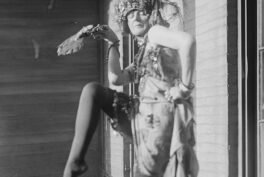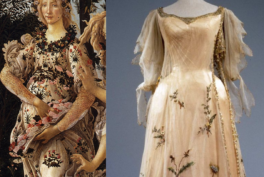Fashion and Art Intersection
Fashion, much like painting or sculpture, can convey emotion, ideology, and a narrative. It’s not just about clothing; it’s also a form of visual communication and artistic expression. Thierry Mugler, a master of this fusion, elevated fashion with his bold, sculptural designs. Through his work, he redefined the boundaries of clothing as an artistic medium. His pieces were not simply garments; they were conceptual works of art. By challenging traditional fashion forms, Mugler’s designs stood out as avant-garde and iconic. Thierry Mugler’s art was unlike anything the world had seen before.
Manfred Thierry Mugler was born on December 12, 1948, in Strasbourg, France. His father worked as a doctor, while his mother, a homemaker, became his first muse. Mugler described her as the most elegant woman in town, a lasting source of inspiration. Despite this, his childhood felt lonely, a reality he struggled to understand or accept.
From an early age, Mugler discovered his artistic inclinations. At nine, he began studying classical dance. Soon, he found solace in the theater and joined the ballet corps of the National Opera of Rhin. As a teenager, he pursued formal interior design training at the Strasbourg School of Decorative Arts. By 20, he moved to Paris and began working as a designer for various fashion houses and boutiques.
In 1973, Mugler launched his first personal collection, Café de Paris. Sophisticated and urban, it was inspired by the Golden Era of Hollywood. The collection introduced the daring, futuristic undertones that defined his later work. By 1977, Mugler’s designs reflected punk influences, showcasing his versatility. The following year, in 1978, he opened his first boutique in Paris at Place des Victoires. His bold vision quickly gained recognition and established his name in fashion.
Mugler’s Artistic Philosophy
Thierry Mugler saw fashion as an art form, blending sculpture, movement, and storytelling in every design. His work drew inspiration from modern sculpture, with geometric shapes, sharp tailoring, and dramatic proportions defining his style. Mugler’s structured silhouettes, with pronounced shoulders and clean lines, often drew comparisons to the works of Henry Moore, whose sculptures redefined form and space.
Using materials like latex, leather, rubber, and plastic, Mugler created the illusion of a reshaped body. His designs framed the human form as a living sculpture, transforming it into something bold and extraordinary. Special effects and intricate makeup heightened the theatricality of his vision. Mugler’s warrior queens, with wide shoulders, cinched waists, and sculpted hips, embodied strength and confidence, pushing the boundaries of traditional femininity.
Critics often targeted Thierry Mugler’s art, calling his creations misogynistic. They argued his designs turned women into hyper-sexualized, cartoon-like figures. Others accused him of promoting a fascist aesthetic and obsessing over hard-edge attire.
Yet Mugler’s work defied such interpretations. Unlike his predecessors, he did not oppress through fashion. His designs embodied power, control, and strength. Materials like metal, vinyl, latex, faux fur, and diamantes transformed his women into fantastical, trans-species beings. It’s no surprise that Thierry Mugler’s art profoundly influenced prolific designers like Alexander McQueen, Rick Owens, and Jeremy Scott.
Inspirations
Art Influences
The first noticeable of Mugler’s inspirations is Futurism. His 1980s collections often echoed Futurist artists who explored motion, technology, and modernity. His use of plastic, latex, and reflective materials gave his creations a distinct space-age aesthetic. He pushed the boundaries of fashion, mirroring the science fiction visuals of the 20th century. Through his work, women became aliens, cars, insects, and robots—bodies transformed into imaginative, otherworldly forms.
Another key influence visible in Thierry Mugler’s work is Surrealism. Mugler frequently played with unconventional proportions, distorted silhouettes, and dreamlike imagery, aligning with Surrealist themes. Like Salvador Dalí’s paintings, Mugler’s designs twisted reality, challenging perceptions of the human body. His collections often posed the question, “What if the body could defy nature?” Oversized, angular shoulders and elongated waists became recurring elements, echoing Surrealism’s fascination with distortion and its critique of the natural world.























